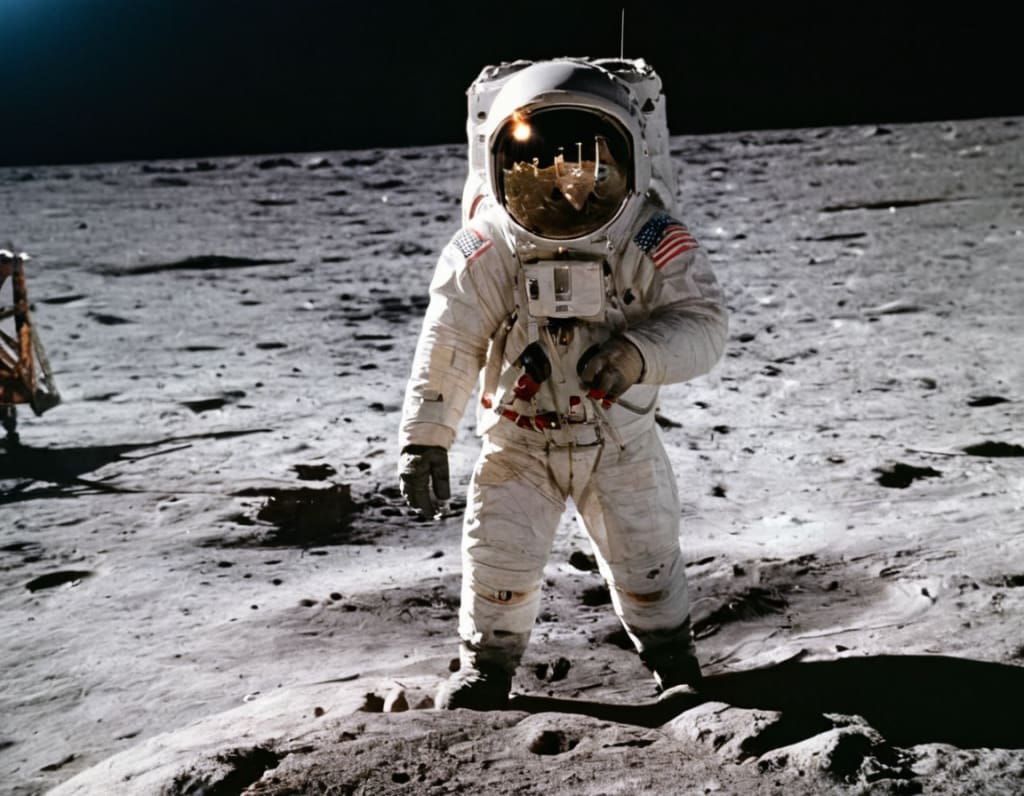U.S. Moon Landing: How to Watch and What to Know
Your Comprehensive Guide to Witnessing and Understanding this Historic Event

On the brink of a monumental achievement in space exploration, Odysseus, a private spacecraft, is poised to make history with its scheduled lunar touchdown on Thursday. Representing the first U.S. moon landing in over five decades, this endeavor, spearheaded by Intuitive Machines, a Houston-based company, signifies a remarkable advancement in lunar exploration.
Following a crucial engine firing that lasted six minutes and 48 seconds, Odysseus successfully maneuvered into a circular orbit positioned 57 miles above the lunar surface. With this pivotal step accomplished, all eyes are now set on Thursday's anticipated landing, which, if executed as planned, will mark the first soft landing by a private spacecraft on the moon and the first American mission to achieve this feat since Apollo 17 in 1972.
The landing is scheduled for 5:30 p.m. Eastern time on Thursday, with NASA TV providing live coverage starting at 4 p.m. Although a private mission, NASA stands as the primary customer, having invested $118 million for the delivery of six instruments to the moon.
Odysseus is targeting a landing site in the south polar region, situated outside the Malapert A crater, approximately 185 miles from the moon’s south pole. This region is of significant interest due to the presence of craters shrouded in perpetual shadow, potentially harboring water ice, a critical resource for future lunar exploration efforts.
The landing sequence entails a series of meticulously orchestrated maneuvers. Initially, the spacecraft will adjust its circular orbit into an elliptical one, descending to within approximately six miles of the lunar surface. From this juncture onwards, Odysseus will operate autonomously, employing onboard instruments to navigate and control its descent. Cameras and laser beams will aid in determining its position and altitude, ensuring a precise and safe landing.
Upon reaching a distance of about 1.2 miles from the landing site, the spacecraft will pivot to an upright orientation, utilizing sensors to identify a suitable landing spot. In the final moments of descent, Odysseus will rely solely on its inertial measurement units to navigate the landing terrain, ensuring accuracy and stability amidst the lunar environment.
Following its landing, Odysseus's mission will be time-constrained due to its reliance on solar power. Equipped with six NASA instruments, including a laser retroreflector array and a LIDAR instrument, the spacecraft will undertake various tasks aimed at enhancing our understanding of the lunar surface and environment.
The mission has progressed remarkably well thus far. Following its launch aboard a SpaceX Falcon 9 rocket on Feb. 15, Odysseus successfully executed engine burns to fine-tune its trajectory towards the moon. Despite initial challenges, including delays in engine testing, the spacecraft has overcome obstacles with resilience and precision, transmitting captivating images of both Earth and the moon along its journey.
In terms of its physical dimensions, Odysseus stands at approximately 14 feet tall and five feet wide, resembling a hexagonal cylinder with six landing legs. This compact yet robust design, reminiscent of the iconic Tardis from "Dr. Who," highlights the ingenuity and efficiency of modern space exploration technology.
Notably, Odysseus's mission exemplifies NASA's commitment to fostering collaboration with private enterprises through initiatives like the Commercial Lunar Payload Services program. By leveraging the expertise of private companies, NASA aims to expand the scope and frequency of lunar missions, paving the way for future scientific endeavors and human exploration endeavors as part of the Artemis program.
In conclusion, the imminent landing of Odysseus represents a momentous milestone in space exploration, epitomizing the fusion of innovation, collaboration, and ambition on the frontier of human endeavor. As the world awaits Thursday's historic event, the significance of this achievement reverberates across the cosmos, inspiring future generations to reach for the stars and beyond.






Comments (2)
The phrase "Beyond the stars, where there are others," evokes a sense of curiosity and wonder, suggesting that there is more to discover beyond our known universe. It hints at the possibility of encountering other forms of life or civilizations in the vastness of space. This comment effectively sparks intrigue and imagination, inviting further exploration and contemplation about the mysteries of the cosmos.
Beyond the stars, where there are others,